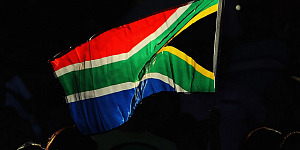South Africa's central bank raised its benchmark repurchase rate by a further 25 basis points to 6.25 percent to prevent a rise in inflation expectations and more generalised inflation in light of growing downside risks from persistent exchange rate depreciation, higher electricity tariffs and a rise in food prices from drought.
The South African Reserve Bank (SARB) has now raised its rate by 50 basis points this year and said four members of its monetary policy committee had voted to raise the rate while two members had preferred to retain the policy stance.
"Complicating the decision was the deteriorating economic outlook," SARB Governor Lesetja Kganyago said, adding that the risks to the outlook were now considered to be on the downside while they were more of less balanced at the previous meeting in September.
While changes to SARB's forecast for inflation was only minor, Kganyago underlined that the upside risks were now more pronounced and expected to outweigh the possible downside risks from lower global oil prices and a subdued pass-through of changes to the exchange rate.
"While these factors cannot be dealt with directly through monetary policy, the concern of the Committee is that failure to act could cause inflation expectations to become unanchored and generate second-round effects and more generalized inflation," he said.
Despite the rate rise, SARB still considers its policy stance to be accommodative and future actions will continue to focus on anchoring inflation within the bank's 3-6 percent range while remaining sensitive to the fragile state of the country's economy.
The forecast for headline inflation this year was trimmed to 4.6 percent from a previous forecast of 4.7 percent and the forecast for core inflation was unchanged at 5.5 percent.
For 2016 inflation was seen at 6.0 percent, down from 6.2 percent and core inflation at 5.5 percent, up from 5.4 percent. For 2017 headline inflation was forecast at an unchanged 5.8 percent and core inflation at 5.4 percent, up from 5.3 percent.
Headline inflation in October was 4.7 percent, up from 4.6 percent in September.
The forecast for Gross Domestic Product growth in 2015 was trimmed to 1.4 percent from 1.5 percent and 1.5 percent for 2016 from 1.6 percent. For 2017 GDP was forecast to expand by an unchanged 2.1 percent.
In the second quarter of this year, South African's GDP grew by an annual rate of 1.2 percent, down from 2.1 percent in the first quarter.
The Rand has been on a weakening trend since mid-2011 when it was above 7 to the U.S. dollar. The rand has experienced volatile trading in recent years, not only due to expectations about U.S. monetary policy but also domestic factors, such as labor unrest.
Since the last meeting by the central bank's monetary policy committee in September, the rand has depreciated 3 percent against the dollar and today it was trading at 14.12 to the dollar, down 17.8 percent this year alone.
"As before, the extent to which Fed tightening has been priced into the exchange rate remains uncertain," SARB said, adding that volatility and overshooting of the exchange rate is likely ahead of and in the immediate aftermath of any change to U.S. rates.






































